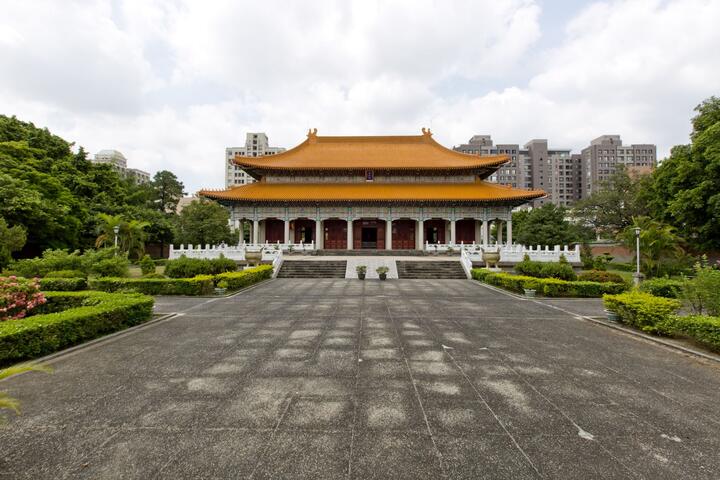Taichung Martyrs' Shrine Introduction
Taichung's Martyrs' Shrine was originally the second generation of Taichung Shrine during the Japanese occupation. In 1942, it was relocated from Xinfuchang (Taichung Park) to Xingaotang Water Source Park (now the areas of Taichung Martyrs' Shrine and Confucius Temple) and was upgraded to a national public small shrine. After Taiwan's retrocession in 1945, the Taichung Shrine was directly transformed into Taichung Martyrs' Shrine. The [Paifang] is a three-bay, four-column, seven-story concrete structure, topped with blue glazed tiles. The inscription "Martyrs' Shrine" is embedded in the middle of the facade, while "Cheng Ren" and "Qu Yi" are on either side, serving as the grand entrance for visitors to the Martyrs' Shrine. The [Shanmen] is also topped with blue glazed tiles, and the roof ridge is adorned with divine beasts. The beams are painted in a Qing-style design, with a deep red cypress wood main gate decorated with ninety-eight bronze nails and beast-head rings. The couplets on either side of the Shanmen read, "Heroic spirit pervades the divine; glorious achievements are honored for eternity" and "Great fame spans the universe; righteousness and virtue enjoy everlasting honor," creating an imposing atmosphere. The [Front Hall] has a roof covered with yellow glazed tiles, decorated with divine beings and mythical beasts. The paintings on the beams include elements like hemp leaf heads, King of Beasts, and sparrow replacements. On either side, there are hexagonal pavilions, with yellow glazed tile roofs topped with precious caps and mythical beasts. The beams are adorned with pastel paintings, and the central beam features intricate designs of passion flowers and intertwined motifs. Inside the pavilion, there are paintings of cloud patterns, and underneath the beams, cypress wood sparrow replacements are carved. The [Main Hall] is a concrete structure modeled after northern Qing dynasty palaces, covered with yellow glazed tiles. The roof ridge is embellished with divine beings and mythical beasts, set against deep red cypress wood diamond-shaped doors and windows. Surrounding the hall are white cement columns with flower-patterned granite bases, encircled by railings featuring dragon-heads and auspicious vases. The altar is laid with dark red granite, while inside the hall, the floor is covered with marble and red carpets, and the walls are clad in granite slabs, enhancing its elegance and solemnity.





































